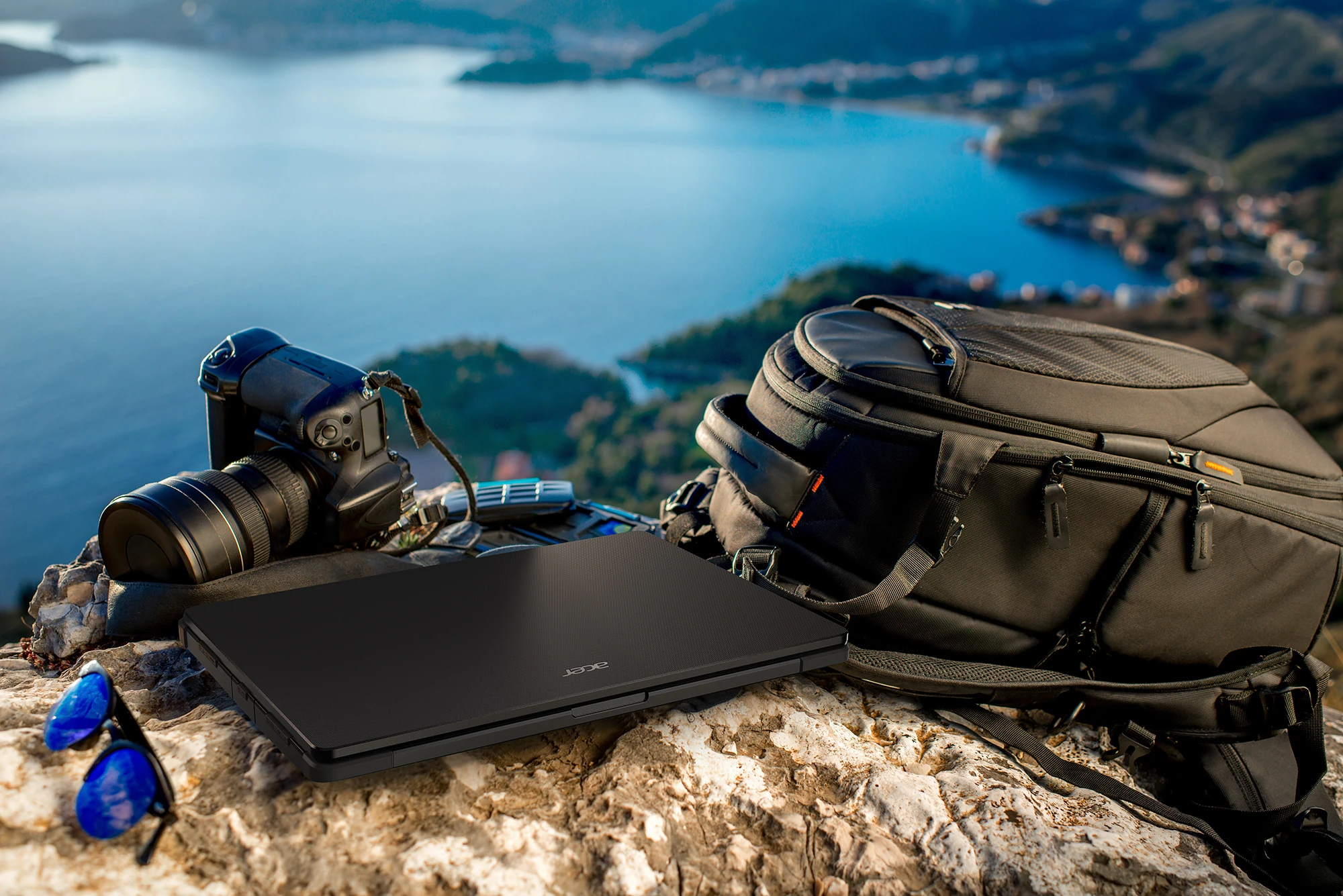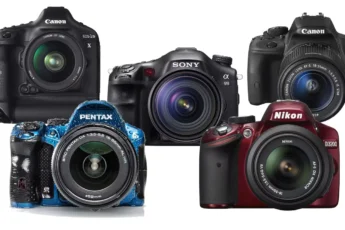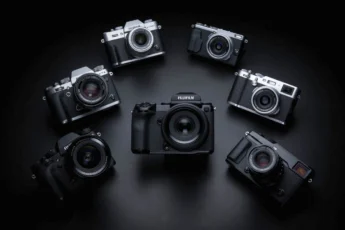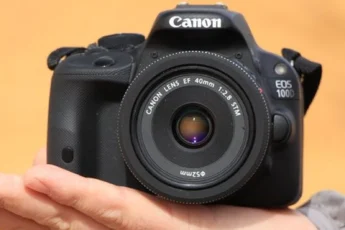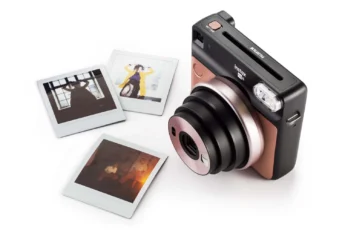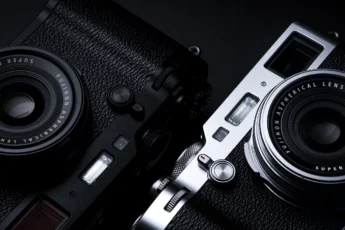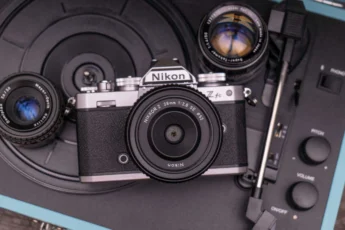In this comprehensive guide, we’ll explore the key factors to consider when selecting a camera for your travel photography needs, delving into the latest and greatest offerings from top brands like Sony, Canon, and more. Whether you’re a seasoned pro or a curious beginner, this article will provide you with the knowledge and inspiration to take your travel photography to new heights. So, grab your passport, pack your bags, and let’s embark on a journey to discover the best cameras for capturing the wonder and beauty of the world in Spring 2024.
- Importance of Choosing the Right Camera for Travel Photography
- Factors to Consider When Selecting a Camera for Travel Photography
- Portability and Size
- Image Quality and Sensor Size
- Lens Versatility
- Battery Life and Connectivity Features
- Top Picks for Cameras in 2024
- Sony A7 IV
- Overview
- Key Features
- Canon EOS R10
- Overview
- Key Features
- Sony RX100 VII
- Overview
- Key Features
- Canon G7X Mark III
- Overview
- Key Features
- Sony Alpha 6600
- Overview
- Key Features
- DSLR vs. Mirrorless Cameras for Travel Photography
- Advantages of Mirrorless Cameras
- Advantages of DSLR Cameras
- Conclusion
Importance of Choosing the Right Camera for Travel Photography
Travel photography is a unique and demanding genre that requires a camera capable of capturing the essence of a place, the emotion of a moment, and the spirit of an adventure. Unlike studio photography or landscape photography, travel photography often involves shooting in a wide variety of conditions, from dimly lit markets to sun-drenched beaches, from bustling city streets to remote wilderness trails. As such, having a camera that can adapt to these diverse scenarios is crucial for capturing the best possible images.
Moreover, travel photography is often a once-in-a-lifetime opportunity. When you’re exploring a new destination, you may only have a brief window of time to capture the perfect shot, whether it’s a fleeting moment of connection with a local, a rare wildlife encounter, or a breathtaking sunset over an ancient monument. With the right camera in hand, you can ensure that you’re always ready to seize these opportunities and create images that will transport you back to those unforgettable experiences for years to come.
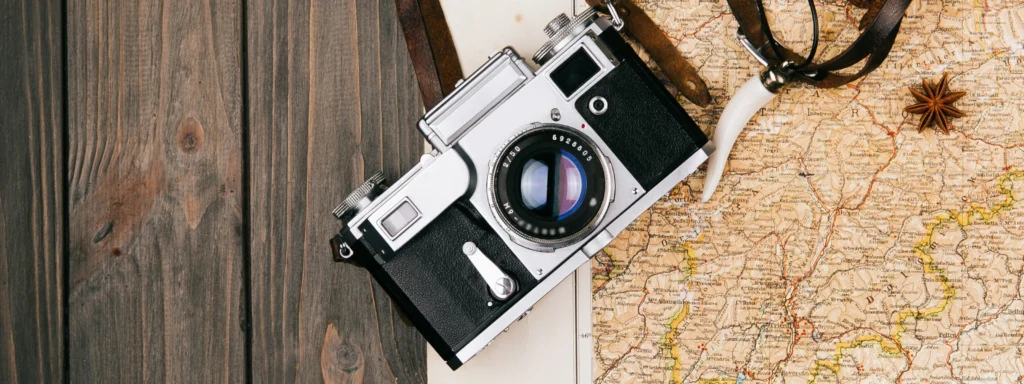
Investing in a high-quality travel camera can also elevate your photography skills and inspire you to see the world in new ways. With features like advanced autofocus systems, high-resolution sensors, and powerful image stabilization, today’s travel cameras offer unprecedented creative control and flexibility. Whether you’re shooting sweeping landscapes, intimate portraits, or fast-paced action shots, the right camera will give you the tools and confidence to push your boundaries and capture images that truly reflect your unique vision and style.
Ultimately, the camera you choose for your travel photography will become an extension of your creative eye, your trusty companion on the road, and your gateway to a world of endless photographic possibilities. By taking the time to carefully consider your needs and invest in a camera that aligns with your goals and aspirations, you’ll be setting yourself up for a lifetime of unforgettable images and cherished memories.
Factors to Consider When Selecting a Camera for Travel Photography
Portability and Size
When it comes to travel photography, portability and size are key considerations. After all, you’ll be carrying your camera gear with you wherever you go, whether it’s on a long hike through the mountains or a crowded subway ride in a bustling city. A camera that’s too bulky or heavy can quickly become a burden, limiting your mobility and your ability to capture spontaneous moments as they unfold.
Fortunately, camera technology has come a long way in recent years, and there are now plenty of compact and lightweight options that still offer excellent image quality and features. Mirrorless cameras, in particular, have revolutionized the travel photography game, offering the performance of a DSLR in a much smaller and more portable package. When evaluating cameras for their portability, consider factors like weight, dimensions, and ergonomics. A camera that feels comfortable in your hand and can easily be stowed in a small bag or pocket will make a world of difference when you’re on the go.
Image Quality and Sensor Size
Of course, portability is only one piece of the puzzle. Equally important is the image quality that a camera can deliver. When you’re capturing once-in-a-lifetime moments and breathtaking landscapes, you want to be sure that your camera is up to the task, delivering sharp, detailed, and vibrant images that do justice to the scene before you.
One of the key factors that determines image quality is sensor size. In general, larger sensors tend to produce better image quality, particularly in low light situations. Full-frame sensors, which are the same size as a frame of 35mm film, offer the best performance in terms of dynamic range, depth of field, and low light capability. APS-C sensors, which are slightly smaller,are also a popular choice for travel photography, offering a good balance between image quality and portability.
When evaluating a camera’s image quality, look for features like high resolution (megapixels), good low light performance (high ISO capability), and a wide dynamic range (the ability to capture both bright and dark areas in a single image). RAW image capture is also a valuable feature, as it allows for greater flexibility and control in post-processing.
Lens Versatility
Another important factor to consider when choosing a travel camera is lens versatility. When you’re on the road, you never know what kind of photographic opportunities might present themselves – from wide-angle landscapes to telephoto wildlife shots. Having a camera with a versatile lens system can help ensure that you’re always ready to capture the moment, no matter what the situation.
Interchangeable lens cameras, like DSLRs and mirrorless cameras, offer the greatest flexibility in terms of lens options. With these cameras, you can swap out lenses to suit your specific needs, whether it’s a wide-angle lens for expansive vistas or a telephoto lens for distant subjects. Look for cameras with a wide selection of high-quality lenses available, including both zoom and prime options.
If you prefer the simplicity of a fixed-lens camera, look for models with a versatile zoom range that covers a wide range of focal lengths. Many travel-oriented compact cameras now offer impressive zoom ranges, allowing you to capture everything from wide-angle scenics to detailed close-ups without the need to change lenses.
Battery Life and Connectivity Features
Finally, don’t overlook the importance of battery life and connectivity features when choosing a travel camera. When you’re on the go, you don’t want to be constantly worried about running out of power or missing out on the ability to share your images with others.
Look for cameras with long battery life, ideally rated for several hundred shots per charge. Many mirrorless cameras now offer improved battery performance, thanks to advancements in technology and more efficient power management systems. Consider investing in spare batteries as well, particularly if you plan on shooting heavily or venturing off the grid for extended periods.
In terms of connectivity, look for cameras with built-in Wi-Fi, Bluetooth, and/or NFC capabilities. These features allow you to easily transfer images to your smartphone or tablet for quick sharing on social media or backing up to the cloud. Some cameras even offer the ability to control the camera remotely using a smartphone app, which can be handy for setting up shots in tricky locations or capturing selfies with ease.
Top Picks for Cameras in 2024
Sony A7 IV
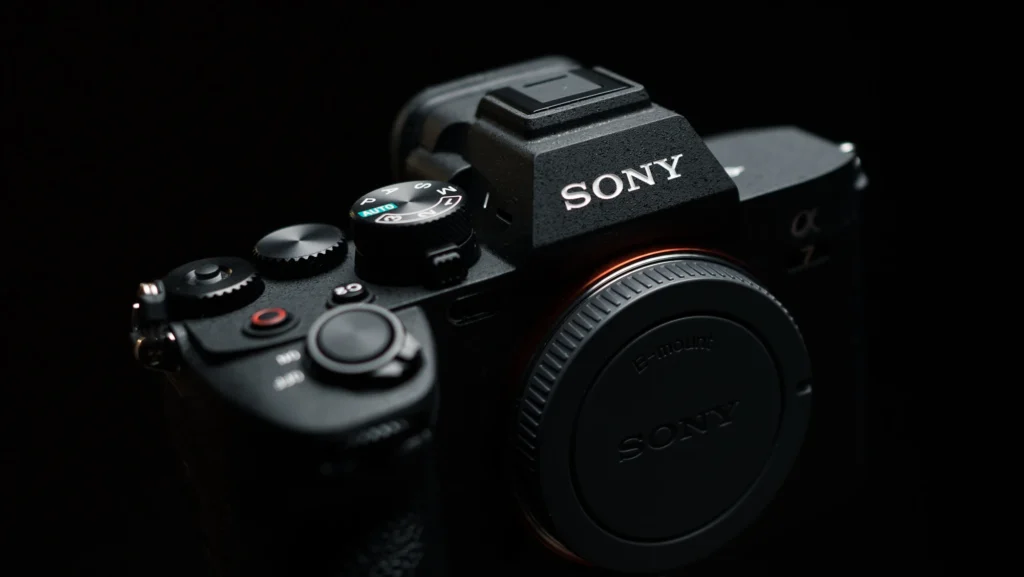
Overview
The Sony A7 IV is a full-frame mirrorless camera that offers an impressive combination of image quality, performance, and versatility. Released in 2021, it has quickly become a favorite among travel photographers thanks to its compact size, advanced features, and exceptional low-light capabilities.
Key Features
- 33MP full-frame BSI CMOS sensor delivers outstanding image quality and dynamic range
- Advanced autofocus system with 759 phase-detection points and real-time eye AF for humans and animals
- In-body image stabilization (IBIS) for sharper handheld shots and smoother video
- 4K 60p video recording with full pixel readout and no binning
- Dual SD card slots for expanded storage and backup options
- Weather-sealed body for enhanced durability in challenging conditions
The Sony A7 IV’s high-resolution sensor and advanced autofocus system make it an excellent choice for capturing detailed landscapes, portraits, and wildlife shots. Its compact size and weather-sealed body also make it well-suited for travel photography, allowing you to take it anywhere without sacrificing image quality or performance.
Canon EOS R10
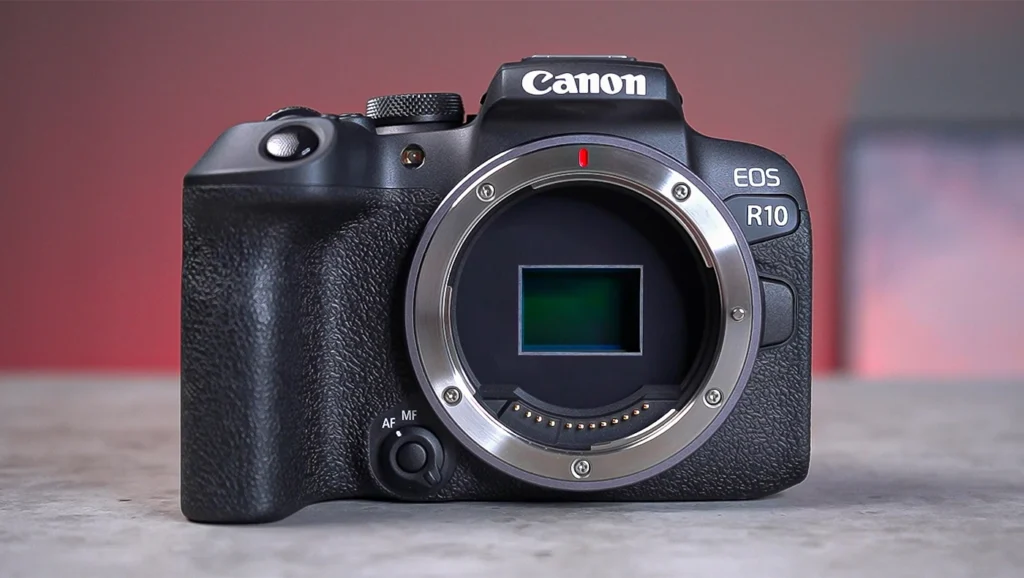
Overview
The Canon EOS R10 is an APS-C mirrorless camera that offers a compelling blend of affordability, performance, and ease of use. Released in 2022, it’s an excellent option for travel photographers who want the benefits of Canon’s RF lens system in a more compact and budget-friendly package.
Key Features
- 24.2MP APS-C CMOS sensor delivers excellent image quality and low-light performance
- Dual Pixel CMOS AF II system with improved tracking and eye detection
- Up to 15fps continuous shooting with mechanical shutter, 23fps with electronic shutter
- 4K 30p video recording with no crop and HDR-PQ support
- Built-in Wi-Fi and Bluetooth for easy connectivity and remote control
- Compact and lightweight body, well-suited for travel and everyday carry
The Canon EOS R10 is a great choice for travel photographers who prioritize portability and versatility. Its fast and accurate autofocus system, combined with Canon’s growing RF lens lineup, make it capable of capturing a wide range ofsubjects and scenes. The camera’s intuitive controls and user-friendly interface also make it a good option for beginners or those upgrading from a smartphone or point-and-shoot camera.
Sony RX100 VII
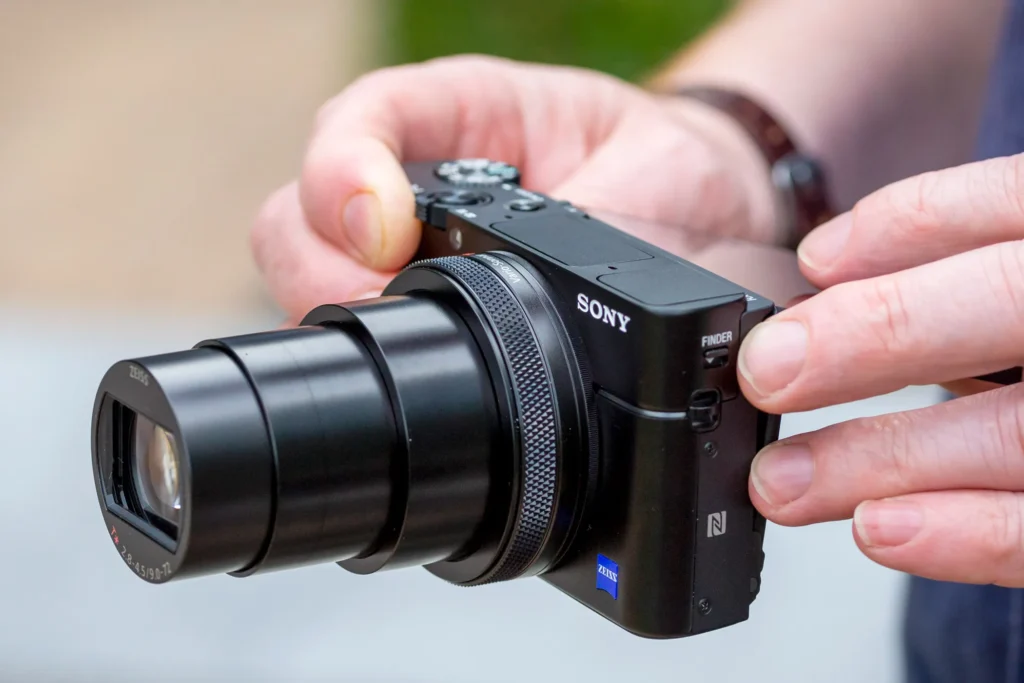
Overview
The Sony RX100 VII is a premium compact camera that packs a ton of features and performance into a pocket-friendly package. Released in 2019, it remains a top choice for travel photographers who want the convenience of a compact camera without sacrificing image quality or versatility.
Key Features
- 20.1MP 1-inch Exmor RS CMOS sensor delivers excellent image quality and low-light performance
- 24-200mm equivalent F2.8-4.5 zoom lens provides versatile focal range for a wide variety of shooting situations
- Advanced autofocus system with 357 phase-detection points and real-time tracking and eye AF
- Up to 20fps continuous shooting with AF/AE tracking
- 4K 30p video recording with full pixel readout and no pixel binning
- Pop-up electronic viewfinder and tilting LCD screen for added shooting flexibility
The Sony RX100 VII’s combination of a large 1-inch sensor, versatile zoom lens, and advanced autofocus system make it an exceptionally capable camera for its size. Its pocketable form factor and extensive feature set also make it an ideal choice for travel photographers who want to minimize their gear without compromising on quality or performance.
Canon G7X Mark III
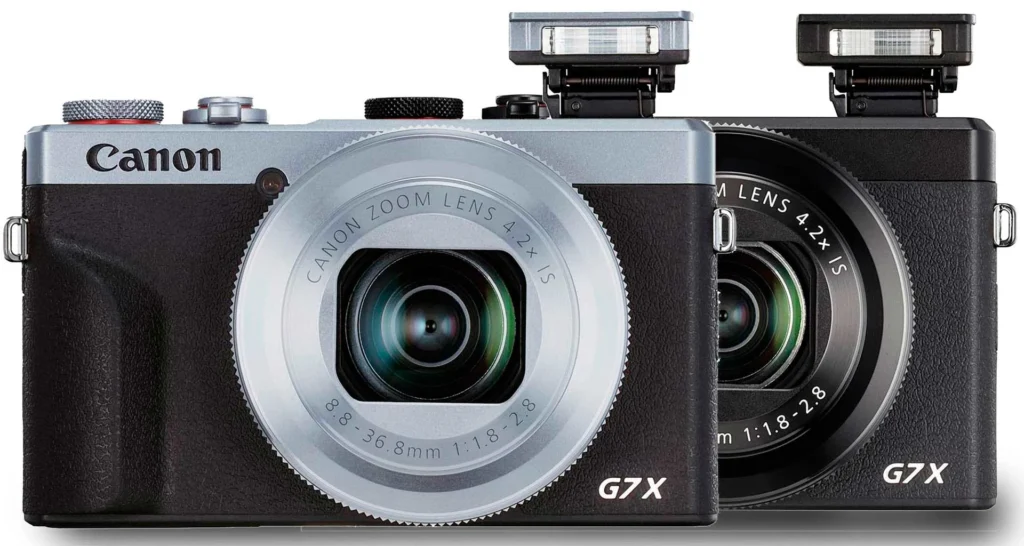
Overview
The Canon G7X Mark III is another popular compact camera choice among travel photographers, offering a winning combination of image quality, performance, and ease of use. Released in 2019, it builds upon the success of its predecessors with updated features and improved capabilities.
Key Features
- 20.1MP 1-inch stacked CMOS sensor delivers excellent image quality and dynamic range
- 24-100mm equivalent F1.8-2.8 zoom lens provides fast aperture and versatile focal range
- Improved autofocus system with 31 AF points and face detection
- 4K 30p video recording with vertical video support for social media
- Built-in Wi-Fi and Bluetooth for easy connectivity and remote control
- Compact and pocketable design with intuitive controls and touchscreen interface
The Canon G7X Mark III’s fast lens, large sensor, and advanced video capabilities make it a popular choice among travel vloggers and content creators. Its compact size and user-friendly features also make it a great option for everyday travel photography, allowing you to capture high-quality images and videos with ease.
Sony Alpha 6600
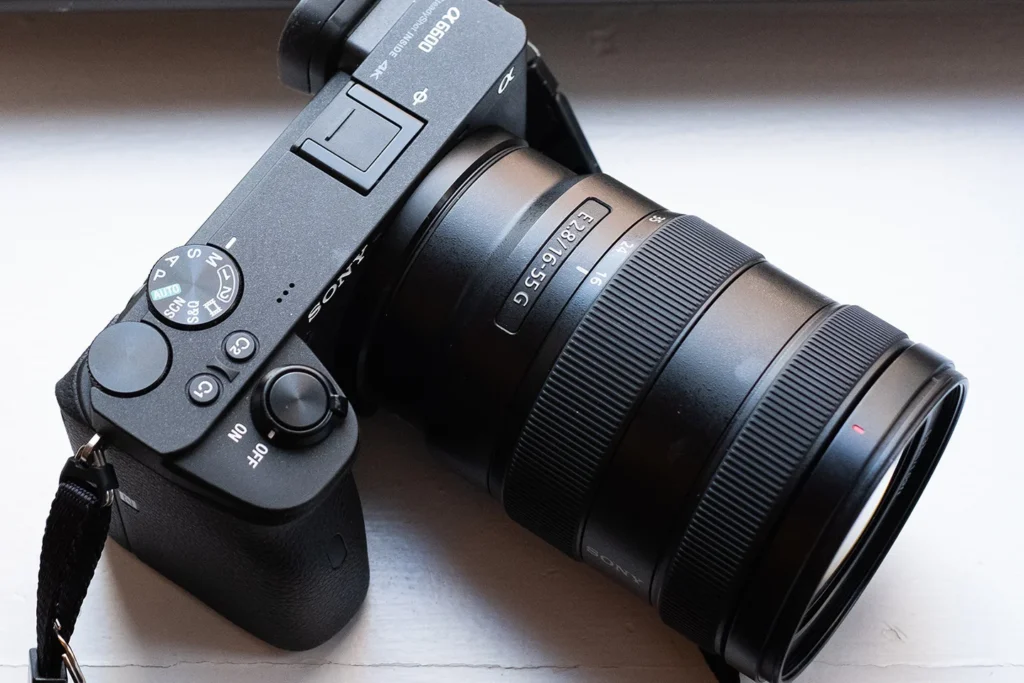
Overview
The Sony Alpha 6600 is a high-end APS-C mirrorless camera that offers many of the features and capabilities of Sony’s full-frame models in a more compact and affordable package. Released in 2019, it remains a top choice for travel photographers who want the versatility and performance of an interchangeable lens camera without the bulk or cost of a full-frame system.
Key Features
- 24.2MP APS-C Exmor CMOS sensor delivers excellent image quality and low-light performance
- Advanced autofocus system with 425 phase-detection points and real-time tracking and eye AF
- In-body image stabilization (IBIS) for sharper handheld shots and smoother video
- 4K 30p video recording with full pixel readout and no pixel binning
- Long battery life (up to 810 shots per charge) for extended shooting sessions
- Weather-sealed body for enhanced durability in challenging conditions
The Sony Alpha 6600’s advanced autofocus system, in-body image stabilization, and extensive lens options make it a versatile choice for travel photography. Its long battery life and weather-sealed body also make it well-suited for extended trips and outdoor adventures, allowing you to shoot with confidence in a variety of conditions.
DSLR vs. Mirrorless Cameras for Travel Photography
When it comes to choosing a camera for travel photography, one of the biggest decisions you’ll face is whether to go with a DSLR or mirrorless system. Both types of cameras have their strengths and weaknesses, and the right choice for you will depend on your specific needs and preferences.
Advantages of Mirrorless Cameras
- Compact and lightweight design, making them easier to carry and pack for travel
- Electronic viewfinder (EVF) provides real-time preview of exposure, white balance, and creative effects
- Advanced autofocus systems with fast and accurate performance, particularlyfor video and tracking moving subjects
- In-body image stabilization (IBIS) available in many models, providing sharper handheld shots and smoother video
- Silent shooting modes for discreet photography in sensitive environments
- Shorter flange distance allows for compact lens designs and adaptability to vintage or third-party lenses
Mirrorless cameras have gained significant popularity among travel photographers in recent years, thanks to their compact size, advanced features, and excellent image quality. The absence of a mirror assembly allows for smaller camera bodies and lenses, making them easier to pack and carry on long trips. Mirrorless cameras also offer advanced autofocus systems, with many models boasting hundreds or even thousands of AF points for fast and accurate focusing.
Advantages of DSLR Cameras
- Optical viewfinder provides a clear, lag-free view of the scene and helps conserve battery life
- Larger selection of lenses and accessories, particularly for Canon and Nikon systems
- Typically offer better battery life than mirrorless cameras
- Ergonomic design with comfortable grip and intuitive controls
- Rugged and durable build quality, with many models featuring weather sealing
- Established systems with a long history and reputation for reliability
While mirrorless cameras have been gaining ground in recent years, DSLRs still offer some unique advantages for travel photographers. The optical viewfinder provides a clear and immediate view of the scene, without the lag or battery drain associated with electronic viewfinders. DSLRs also typically offer a wider selection of lenses and accessories, thanks to their longer history and established lens mounts.
Ultimately, the choice between a DSLR and mirrorless camera for travel photography will come down to your personal preferences and priorities. If you value compactness, advanced features, and video capabilities, a mirrorless camera may be the way to go. If you prioritize battery life, ergonomics, and lens selection, a DSLR may be a better fit. It’s worth trying out both types of cameras in person to see which feels more comfortable and intuitive to use.
Conclusion
Choosing the right camera for travel photography can be a daunting task, with a wide range of options and features to consider. By prioritizing key factors like portability, image quality, lens versatility, and connectivity, you can narrow down your choices and find the camera that best suits your needs and preferences.
In this guide, we’ve highlighted some of the top camera picks for travel photography in Spring 2024, including the Sony A7 IV, Canon EOS R10, Sony RX100 VII, Canon G7X Mark III, and Sony Alpha 6600. Each of these cameras offers a unique combination of features and capabilities, making them well-suited for different types of travel photography and skill levels.
We’ve also explored the pros and cons of DSLR vs. mirrorless cameras for travel photography, highlighting the advantages of each system in terms of size, performance, and lens selection. Ultimately, the best camera for your travel photography needs will depend on your individual preferences, budget, and shooting style.
As you embark on your travel photography journey, remember that the most important tool is your own creativity and vision. A great camera can certainly help you capture stunning images, but it’s your unique perspective and storytelling ability that will truly make your photos stand out.
So, whether you’re exploring a bustling city street or a remote wilderness trail, approach each scene with curiosity, patience, and an open mind. Take the time to observe the light, the colors, the textures, and the emotions of the moment, and let your camera be an extension of your creative eye. With practice, persistence, and a sense of adventure, you’ll be well on your way to capturing the beauty and wonder of the world through your lens.

